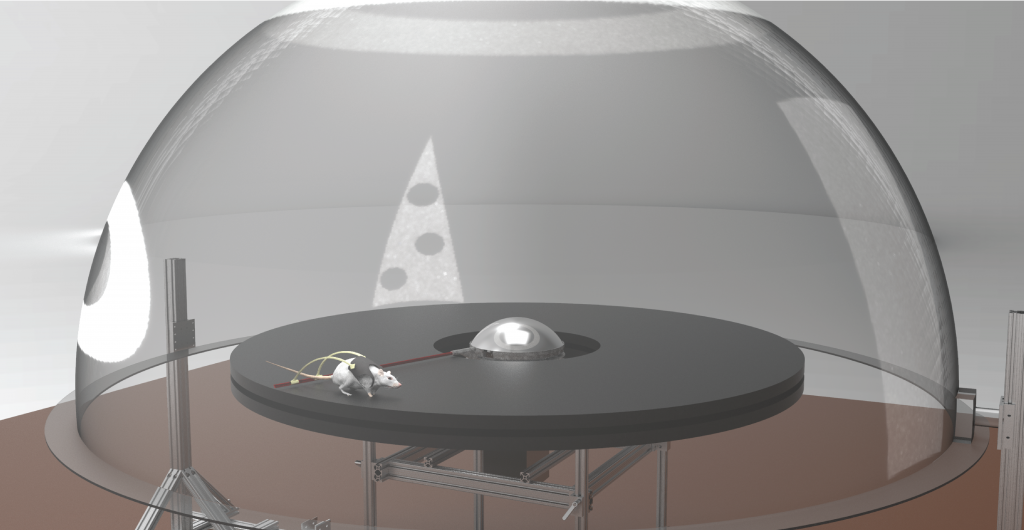Investigating the role of PATH INTEGRATION IN THE COGNITIVE MAP
Edward C. Tolman, in 1948, proposed that rats and other animals had cognitive maps that permitted flexible and efficient navigation. The cognitive map is a mental representation which serves an individual to acquire, code, store, recall, and decode information about the relative locations and attributes of phenomena in their everyday spatial environment.
O’Keefe and Nadel, in the landmark book The Hippocampus as a Cognitive Map (1978) (OKeefe and Nadel, 1978), proposed the hippocampus as the neural substrate of this cognitive map. The hippocampus is thought to play a crucial role in episodic memory by binding the items and events of an experience within a spatiotemporal framework instantiated by place cells, grid cells, and other spatially tuned neurons. These cells are influenced by both self motion (idiothetic) signals and by external sensory landmarks.
The control of place cells by external landmarks has been studied extensively over 30 years, under precisely controlled experimental conditions afforded by the ability to isolate and manipulate specific sets of landmarks. In contrast, it is very difficult to isolate and study the self-motion cues that drive path integration under the same, well-controlled conditions in freely moving animals. Self-motion signals provide the basis for a path integration computation, in which the hippocampal system tracks the animal’s location by integrating its movement vector (speed and direction) over time to continuously update a position signal on the internal, cognitive map. Vestibular signals, optic-flow, proprioception, and motor efference copy are idiothetic cues most often proposed to provide the self-motion signals that update hippocampal spatial representations in a continuous manner as the animal explores an environment.
We investigate how path integration computations interact with external sensory landmarks in a novel virtual reality (VR) system that allows animals to locomote in a more natural manner compared with standard VR systems. This system allows an unprecedented level of dynamic control of visual input while maintaining naturalistic locomotion with intact vestibular, motor, and proprioceptive processing.

In February 2019, the LIMBS Lab of the Department of Mechanical Engineering (N. Cowan, PI) and the Knierim Lab of Mind Brain Institute (J. Knierim, PI) published a study in the journal Nature that showed how the brain translates movement information (e.g., speed and direction) into a position signal on the brain’s “cognitive map.” By placing rats in an augmented reality environment, lead authors Ravi Jayakumar of LIMBS and Manu Madhav of MBI, in collaboration with Francesco Savelli of MBI and T. Blair of UCLA, showed that manipulating the rat’s perceived speed of movement relative to spatial landmarks caused a recalibration of the brain’s “path integration” system. This study provided the first physiological demonstration that the path integration system has a variable gain that is readily modifiable through experience.
JHU Press release: https://www.eurekalert.org/pub_releases/2019-02/jhu-ria020719.php
Popular Science article: https://www.popsci.com/movement-rat-augmented-reality
Publications:
R. P. Jayakumar*, M. S. Madhav*, F. Savelli, H. T. Blair, N. Cowan*, and J. J. Knierim*, “Recalibration of path integration in hippocampal place cells,” Nature, vol. 566, iss. 745, p. 533–-537, 2019. [pdf] *Contributed equally.

